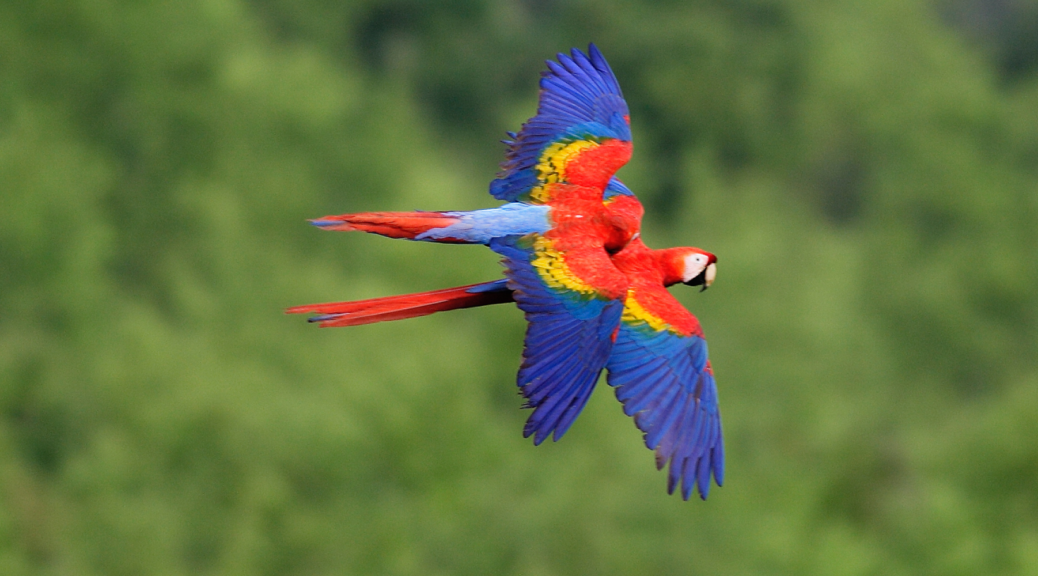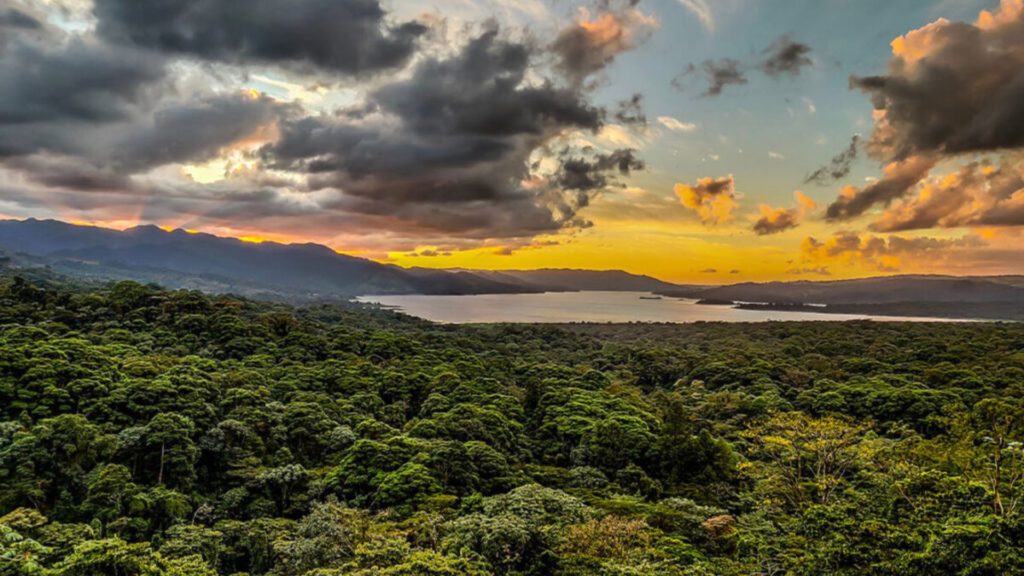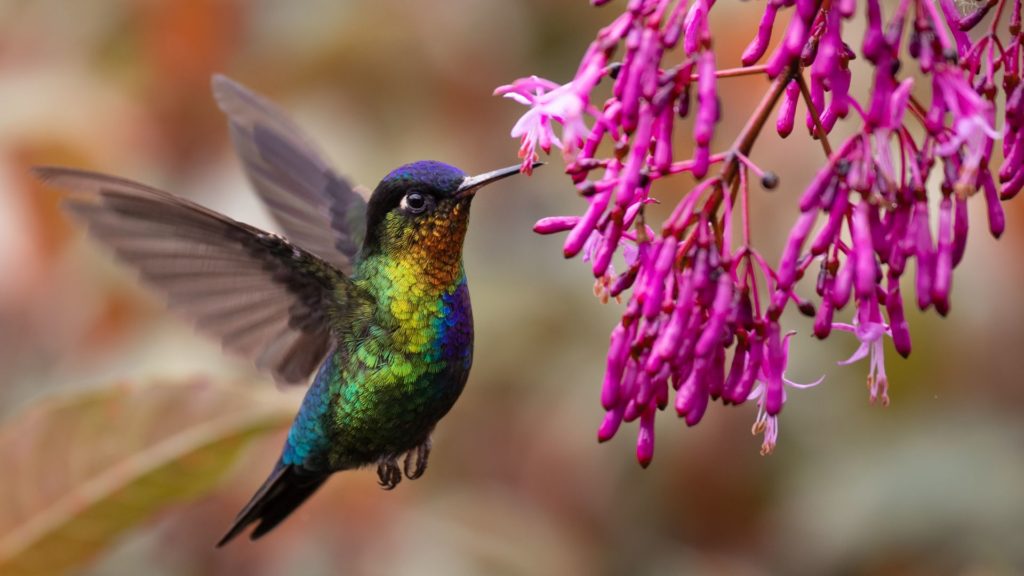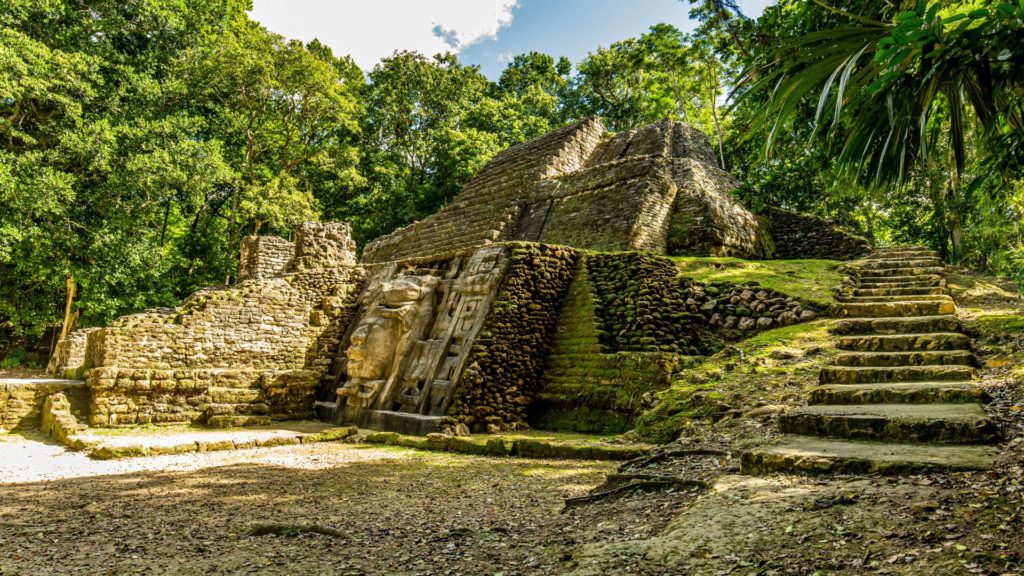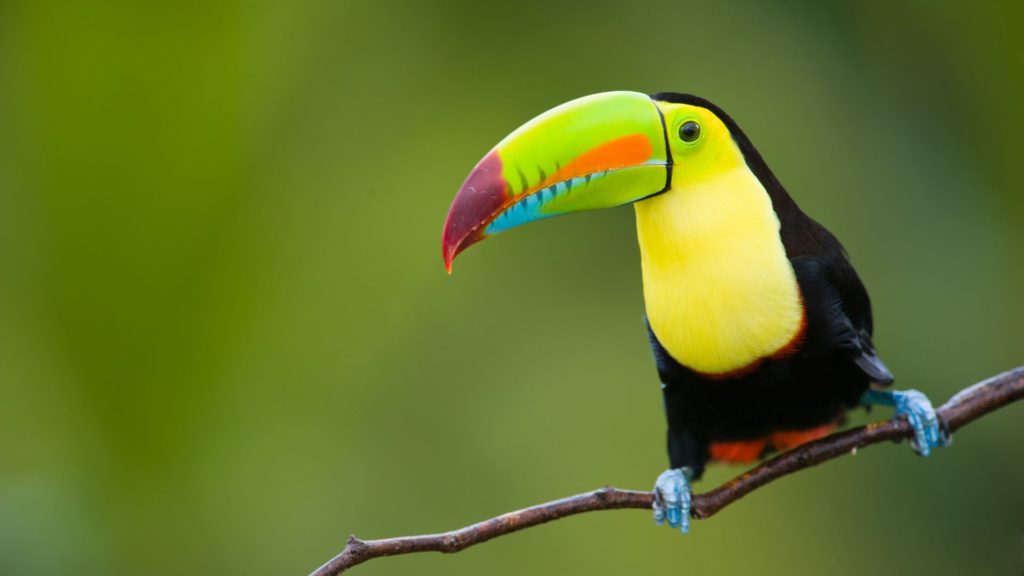Steam rises from the sun-warmed earth. A rainstorm just ended as suddenly as it started. Parrots fly above the forest canopy, winging their way across a sky that turned cerulean after being rinsed by rain. The thunder of a waterfall blends with a howler monkey’s roar. Butterflies drift between blooms that sweeten the air, and dragonflies zoom from pool to pool. The wet skin of a frog gleams in the sunlight. It’s Green Season in Central America, wildlife is everywhere, and crowds are nowhere to be found.
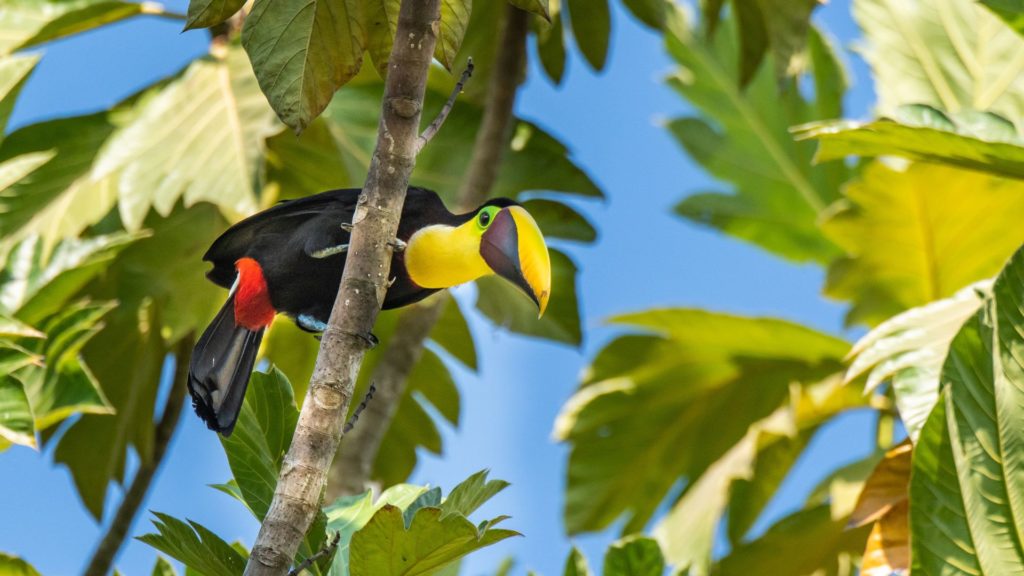
Yellow-throated Toucan
From May through November, during what’s known as Green Season in Central America, landscapes are lush. Travelers tend to avoid the region during this rainy time of year—but birds and other wildlife certainly don’t. Natural beauty in this “off-season” may be more abundant and photogenic than during popular travel months. Also, the reduced demand lowers travel costs, making this emerald gem of a season even more alluring.
Let’s debunk some myths and delve into why Green Season is the perfect time to explore the natural riches of Central America.





Green Season Myth #1: It’s all rain, all the time.
The Green Season does see more rain than the dry months. But mornings are often clear, with clouds building in the afternoon. It rains most days in Green Season, but rain rarely falls all day. Instead of continuous downpours, bursts of rain tend to give way to sun-flooded skies. The lush colors and shifting light offer welcome relief from the dust and glare of the dry season—and provide ideal conditions for photographers.
The moods of your photos in Green Season may change from moment to moment. Swirling mist wraps its tendrils around trees. Then sunlight filters through a cloud, creating a golden glow that permeates the forest. When a window of clear weather opens, you capture an image of a Scarlet Macaw, its colors crisp against the blue sky.
If you dream of photographing verdant rainforests and cascading waterfalls, Green Season will delight you. Imagine standing in the cool air left by a rain shower, aiming your lens at a toucan or motmot. Clouds drape across distant mountains, and a rainbow arches over flower-strewn trees to meet the sparkling sea.
In the evening, while sitting on the veranda of your lodge, you watch lightning lash the jungle. The flickering bolts illuminate bats. The next morning dawns clear, and birds outside your window wake you.





Green Season Myth #2: Birds are scarce.
You may miss some winter migrants during Green Season. However, the impressive diversity of resident birds in this region will be on full display. When rain awakens plants from their dusty slumber, they produce greenery, flowers and fruit. Insects like beetles, katydids and butterflies take advantage of the burgeoning plants, drawing birds into view as they feast on this bounty.
The most satisfying way to experience the biodiversity of Central America is to be there when rain nourishes the region, bringing the tropical landscape to a full and flourishing life. Iconic resident birds—from the Lesson’s Motmot in Belize to the Yellow-throated Toucan in Costa Rica to the Golden-collared Manakin in Panama—will be there with you to celebrate the renewal brought by rain.
A Hidden Benefit
Traveling during Green Season isn’t just about seeking the natural beauty of Central America and finding budget-friendly deals. It’s about supporting communities. The rainy months offer an opportunity to experience vibrant cultures, engage with locals and savor the spirit of Central America. You’ll enjoy a relaxed atmosphere free of crowds, while also bolstering the region’s vitally important ecotourism economy.
Renowned biologist E.O. Wilson stated, “Destroying rainforest for economic gain is like burning a Renaissance painting to cook a meal.”
For people in Central America to preserve the natural wealth of their rainforests, they must be able to make a sustainable living. When you choose to travel in the off-season, you boost businesses when they need it most and help local people thrive year-round, contributing to a promising future for rainforest protection. This hidden benefit makes the secret gem of Central American travel shine especially bright.

